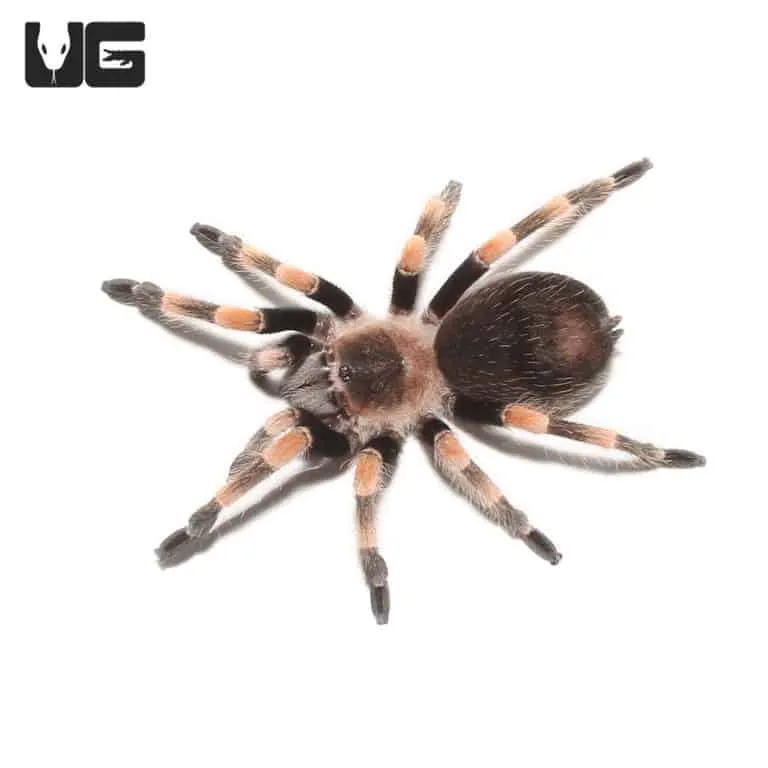Choosing the Right Terrarium Size for Your Tarantula
Selecting the appropriate terrarium size is paramount for the well-being of your Mexican Red Knee Tarantula. The general rule of thumb is to provide a space that is at least three times the tarantula’s leg span in width, and twice the leg span in height. This ensures the tarantula has enough room to move around, explore, and feel secure. A juvenile tarantula can start in a smaller enclosure, such as a 5-gallon tank, which allows for easier access to food and helps the spider feel less overwhelmed. As the tarantula grows, you’ll need to upgrade to a larger terrarium, such as a 10 or 20-gallon tank, depending on its ultimate size. Always prioritize horizontal space over vertical space, as these tarantulas are primarily terrestrial and do not climb much. Avoid excessively large enclosures, which can make it harder for the tarantula to find its food and can also cause stress.
Understanding the Needs of a Mexican Red Knee Tarantula
Before setting up your Mexican Red Knee Tarantula’s terrarium, understanding their specific needs is crucial. These tarantulas are native to the dry scrublands and tropical deciduous forests of the Pacific coast of Mexico. They are primarily terrestrial and burrowing spiders, spending much of their time on the ground or in burrows. Therefore, the terrarium setup must mimic their natural environment. They require a specific temperature range, humidity levels, and appropriate substrate to thrive. They are also sensitive to disturbances and require a secure environment to feel safe. Providing a habitat that replicates their natural conditions is key to their health, longevity, and overall well-being. Careful consideration of these factors will contribute significantly to a happy and healthy tarantula.
Substrate Selection for Your Tarantula Terrarium
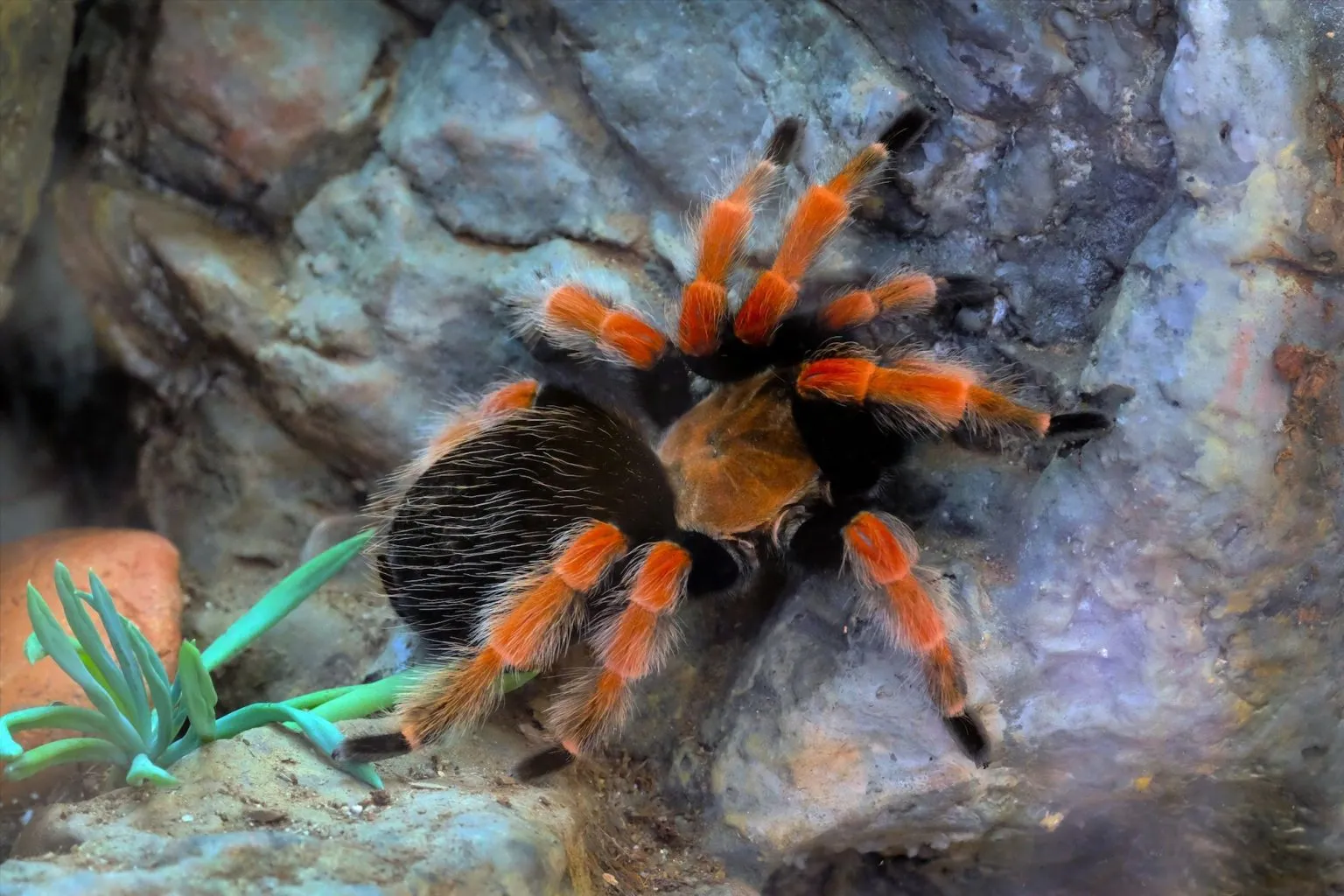
The substrate is the foundation of your Mexican Red Knee Tarantula’s terrarium. It serves multiple vital functions, including providing a comfortable surface for the tarantula to walk on, allowing it to burrow, and helping to regulate humidity. A good substrate should also be absorbent and retain moisture without becoming waterlogged. Several options are available, each with its own benefits. The choice of substrate depends on your preferences and the specific needs of your tarantula. It is essential to choose a substrate that is safe, non-toxic, and easy to maintain. The right substrate will contribute to the overall health and happiness of your pet tarantula.
Ideal Substrate Types
Several substrate options are suitable for Mexican Red Knee Tarantulas. A popular choice is a mix of coconut fiber (coir) and peat moss. Coconut fiber is excellent at retaining moisture and providing a natural environment for burrowing. Peat moss adds to moisture retention and slightly acidifies the substrate, which can help prevent mold growth. Another viable option is a mix of soil, sand, and peat moss, replicating the conditions found in their natural habitat. Vermiculite can also be added to the substrate mix to help retain moisture and improve aeration. It is important to avoid substrates that contain fertilizers or pesticides, as these can be harmful to your tarantula. The ideal substrate allows for burrowing, maintains humidity, and supports the overall health of your tarantula.
Creating a Naturalistic Substrate
To create a naturalistic substrate, start by layering the chosen substrate mix to a depth of at least 4-6 inches. This depth allows the tarantula to burrow comfortably. The substrate should be slightly compacted but not tightly packed, allowing for good air circulation. Adding leaf litter, such as dried oak or magnolia leaves, to the surface provides a naturalistic look and feel while also helping to retain moisture. You can also add small pieces of cork bark or other decorations to the substrate to create additional hiding spots and enhance the overall aesthetic. Regularly mist the substrate to maintain the correct humidity levels. The goal is to create an environment that closely mimics the tarantula’s natural habitat. A well-designed substrate promotes burrowing behavior, enhances the tarantula’s well-being, and contributes to a visually appealing terrarium.
Terrarium Decor for a Happy Tarantula
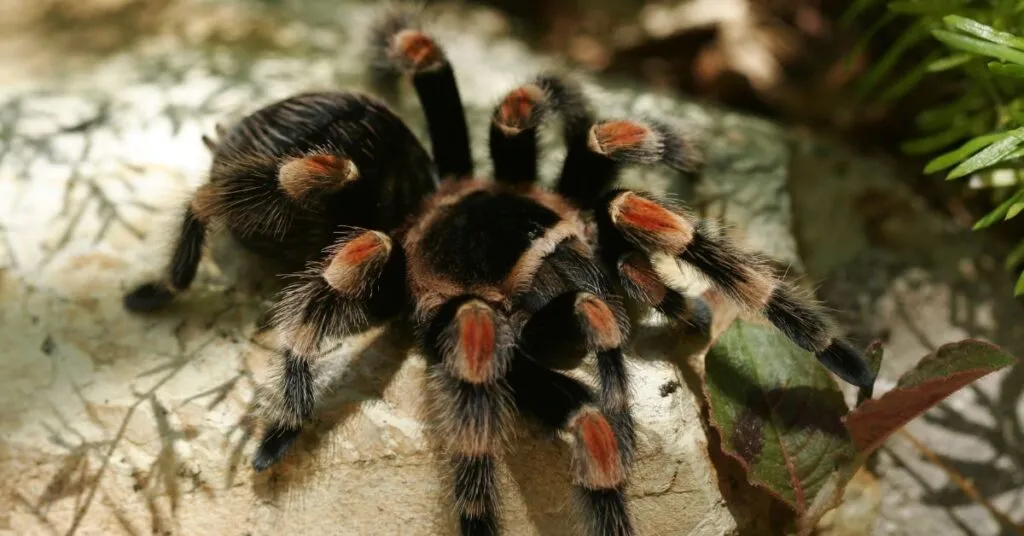
Decorating the terrarium goes beyond aesthetics it provides essential enrichment for your Mexican Red Knee Tarantula. The right decorations provide hiding spots, encourage natural behaviors, and make the tarantula feel secure. Essential elements include shelters and hiding places, which are crucial for the tarantula to retreat and feel safe. Additionally, decorations help maintain humidity levels and create a more natural and stimulating environment. When choosing decor, prioritize safety and functionality, ensuring all items are non-toxic and do not pose a hazard to your tarantula. The right terrarium decor can significantly improve the tarantula’s well-being and enhance the overall experience of keeping this fascinating pet.
Essential Hiding Spots and Shelters
Providing adequate hiding spots is paramount for the well-being of a Mexican Red Knee Tarantula. These tarantulas are naturally shy and vulnerable, so a secure hiding place is essential for them to feel safe and reduce stress. Cork bark is an excellent option, as it provides a naturalistic look, allows the tarantula to burrow underneath, and helps maintain humidity. Half-logs, artificial caves, and even sturdy, overturned plant pots also make suitable shelters. Make sure the hiding spot is large enough for the tarantula to comfortably fit inside but not so large that it feels exposed. The presence of a secure hiding spot allows the tarantula to retreat and feel safe, which reduces stress and encourages its natural behaviors. Providing several options for hiding places allows the tarantula to choose its preferred spot.
Proper Ventilation and Airflow
Proper ventilation is a critical aspect of a healthy terrarium environment. It prevents the buildup of harmful bacteria, mold, and excess humidity. Adequate airflow is essential for the well-being of your Mexican Red Knee Tarantula. Poor ventilation can lead to respiratory problems and other health issues. The terrarium should have cross-ventilation, with air entering from one side and exiting from another. This can be achieved by using a terrarium with ventilation holes on the top and sides, or by carefully modifying an existing enclosure. Avoid completely sealing the terrarium, as this will trap moisture and create an environment conducive to mold growth. Regular monitoring of ventilation and airflow is essential to ensure the health and well-being of your tarantula.
Maintaining the Right Humidity Levels
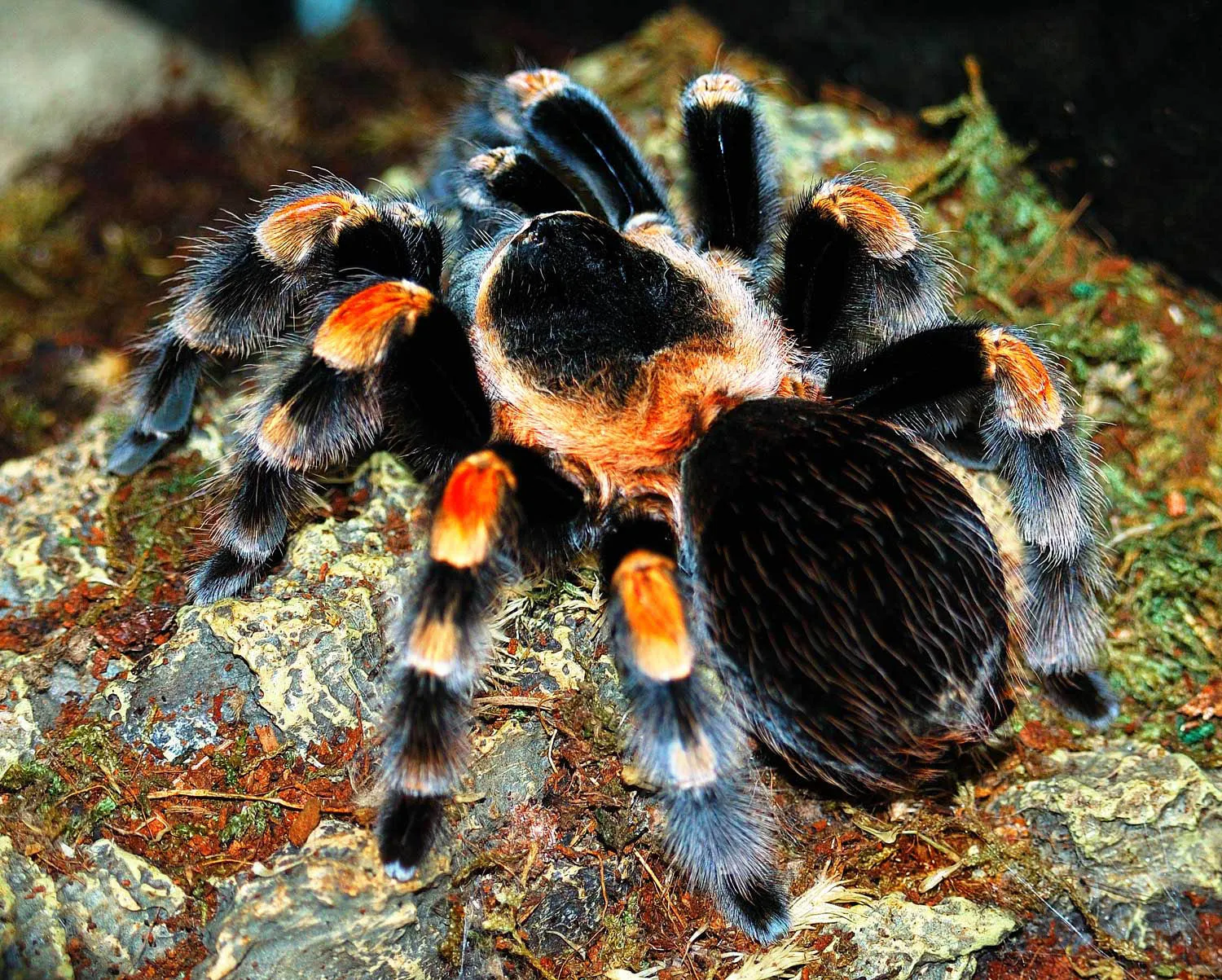
Maintaining proper humidity levels is crucial for the health of your Mexican Red Knee Tarantula. Too little humidity can lead to dehydration and molting problems, while too much can cause respiratory infections and promote mold growth. The ideal humidity range for a Mexican Red Knee Tarantula is between 60% and 70%. You can monitor humidity using a hygrometer, which should be placed inside the terrarium. To increase humidity, mist the terrarium regularly with dechlorinated water, especially along the sides and on the substrate. The frequency of misting will depend on the ventilation and the ambient humidity of your home, typically every other day. Providing a water dish also helps maintain humidity. Proper humidity management promotes healthy molting, prevents dehydration, and ensures the overall well-being of your tarantula. Remember, stable humidity is essential, so regular monitoring and adjustments are key.
Misting and Water Dish Setup
Misting and the provision of a water dish are the primary methods for maintaining humidity in a Mexican Red Knee Tarantula terrarium. Misting should be done with dechlorinated water, as chlorine can be harmful to tarantulas. The frequency of misting depends on the ventilation and the ambient humidity, usually every other day or as needed to maintain the desired humidity level. Avoid misting the tarantula directly, as this can stress it. A shallow water dish should always be available, providing a constant source of fresh water. The water dish should be shallow enough to prevent the tarantula from drowning, and it should be cleaned and refilled regularly to prevent bacterial growth. Place the water dish on the substrate for easy access. The proper setup of the misting system and water dish ensures that your tarantula stays hydrated and comfortable within its terrarium.
Temperature Regulation in the Terrarium
Maintaining the correct temperature is critical to the health and activity levels of your Mexican Red Knee Tarantula. These tarantulas thrive in temperatures between 75 and 85 degrees Fahrenheit (24 to 29 degrees Celsius). Temperature influences their metabolism, appetite, and overall well-being. To ensure the appropriate temperature, use a thermometer to monitor the terrarium’s temperature. It is important to avoid extreme fluctuations in temperature, as these can stress the tarantula. You can maintain the desired temperature using a variety of methods, including heat mats or ceramic heat emitters, which are safer heating options. Placing the heat source on one side of the terrarium creates a thermal gradient, allowing the tarantula to choose its preferred temperature. Proper temperature management ensures that your tarantula remains healthy and active. Regular monitoring and adjustments are essential.
Heating Options Safe for Tarantulas
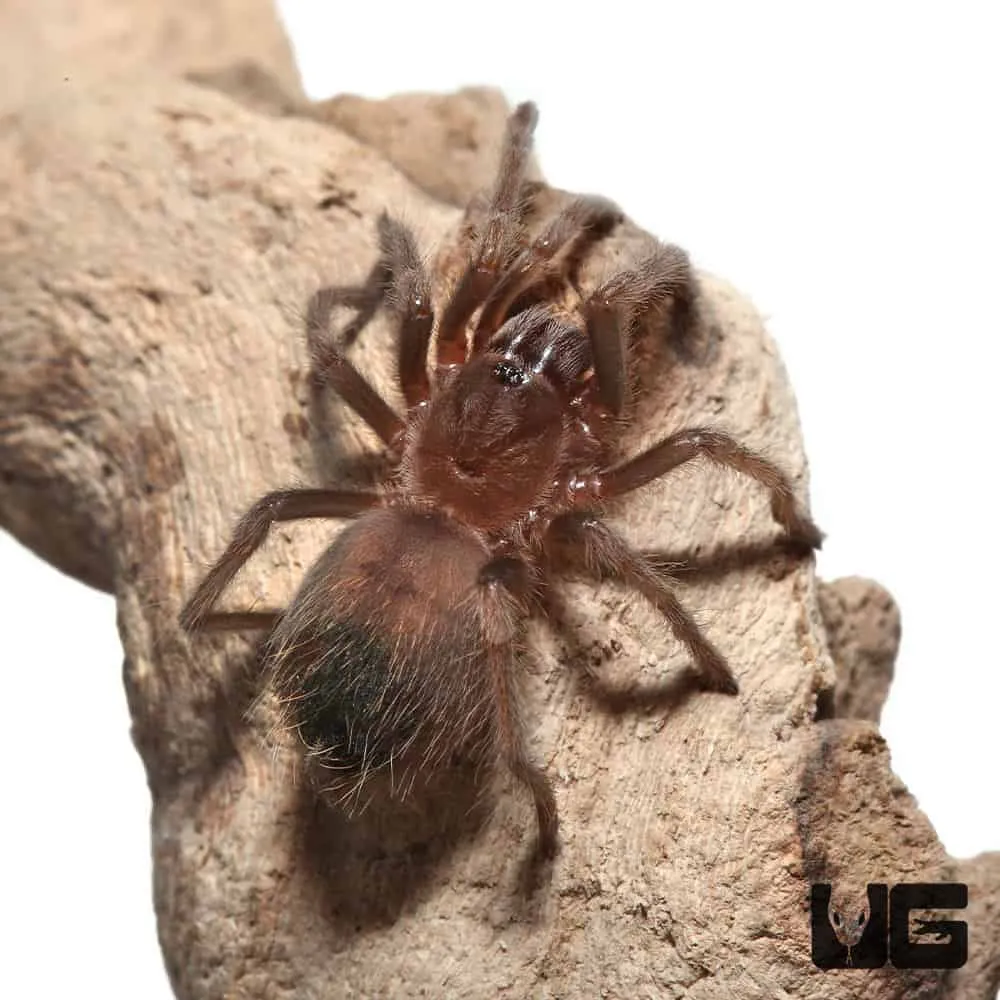
When selecting a heating option for your Mexican Red Knee Tarantula’s terrarium, safety is paramount. Avoid using incandescent light bulbs, as they can produce excessive heat and dry out the terrarium. Heat mats, placed on the side or under the terrarium, are a safer option, but should be regulated with a thermostat to prevent overheating. Ceramic heat emitters are also a good choice, as they produce radiant heat without light, allowing for a natural day-night cycle. Always use a thermostat to control the heat output and prevent the temperature from exceeding the desired range. Position the heat source on one side of the terrarium, creating a thermal gradient. This allows the tarantula to move to warmer or cooler areas as needed. Regularly check the temperature with a thermometer to ensure the heating system is functioning correctly. Safety is the top priority when selecting a heating method for your tarantula.
Feeding and Cleaning Your Tarantula’s Home
Proper feeding and regular cleaning are essential aspects of caring for your Mexican Red Knee Tarantula, ensuring its health and longevity. A balanced diet, appropriate for the tarantula’s size and developmental stage, coupled with a clean terrarium environment, will help your pet thrive. Consistent attention to feeding and cleaning routines keeps the habitat hygienic and prevents the buildup of waste and potential health hazards. It is critical to establish a feeding schedule, choose appropriate prey items, and understand the importance of maintaining a clean and sanitary terrarium. These practices contribute significantly to the overall well-being of your tarantula.
Feeding Your Mexican Red Knee Tarantula
Feeding your Mexican Red Knee Tarantula requires a well-planned approach. The frequency of feeding depends on the tarantula’s age and size. Spiderlings and juveniles should be fed once or twice a week, while adult tarantulas can be fed every one to two weeks. The size of the prey should be appropriate for the size of the tarantula: a good rule of thumb is to offer insects no larger than the tarantula’s abdomen. Crickets, mealworms, and roaches are common and suitable food items. Remove any uneaten prey within 24 hours to prevent stress on the tarantula and maintain cleanliness in the terrarium. Always provide fresh water. During molting, the tarantula may refuse food; it’s best not to disturb it during this vulnerable time. Provide a diverse diet to ensure the tarantula receives all the necessary nutrients. A balanced feeding routine directly contributes to the tarantula’s health and growth.
Cleaning and Maintenance Schedule
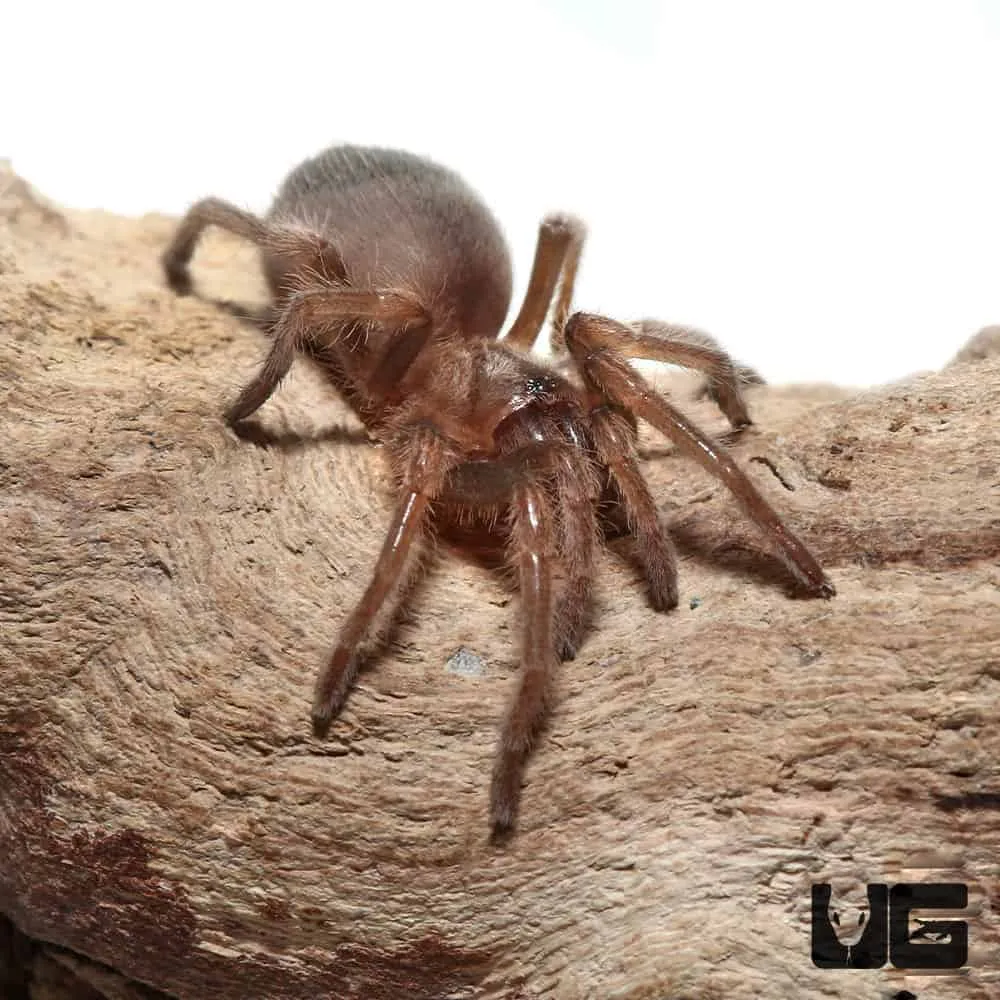
Maintaining a clean terrarium is essential for the health of your Mexican Red Knee Tarantula. A regular cleaning schedule helps prevent the buildup of waste, mold, and bacteria. Spot-clean the terrarium weekly, removing any uneaten prey, molted exoskeletons, and fecal matter. Replace the water in the water dish regularly. Deep-clean the terrarium every few months, replacing the substrate entirely. During this process, carefully remove the tarantula from its enclosure and place it in a temporary holding container. Clean the terrarium walls and decorations with warm water and a reptile-safe disinfectant. Always rinse thoroughly and allow everything to dry completely before returning the tarantula to its habitat. Regular cleaning and maintenance keeps your tarantula’s environment sanitary and promotes its overall well-being.
Troubleshooting Common Terrarium Problems
Even with careful planning, you may encounter some common issues with your Mexican Red Knee Tarantula’s terrarium. Recognizing and addressing these problems promptly is crucial for the health of your pet. Problems may include improper humidity levels, temperature fluctuations, and mold or mite infestations. Dehydration is a common issue, often indicated by a wrinkled abdomen, correct this by increasing humidity and ensuring a constant water source. Temperature fluctuations can be caused by a malfunctioning heat source or changes in the ambient temperature. Check your thermometer and adjust the heat source accordingly. Mold or mite infestations can arise from excessive humidity or unsanitary conditions. Identify the root cause and take corrective action, such as improving ventilation or changing the substrate. If you observe any unusual behavior in your tarantula or encounter issues with the terrarium environment, consult with an experienced tarantula keeper or veterinarian for guidance. Taking proactive steps to troubleshoot common problems will ensure the long-term health and well-being of your Mexican Red Knee Tarantula.
